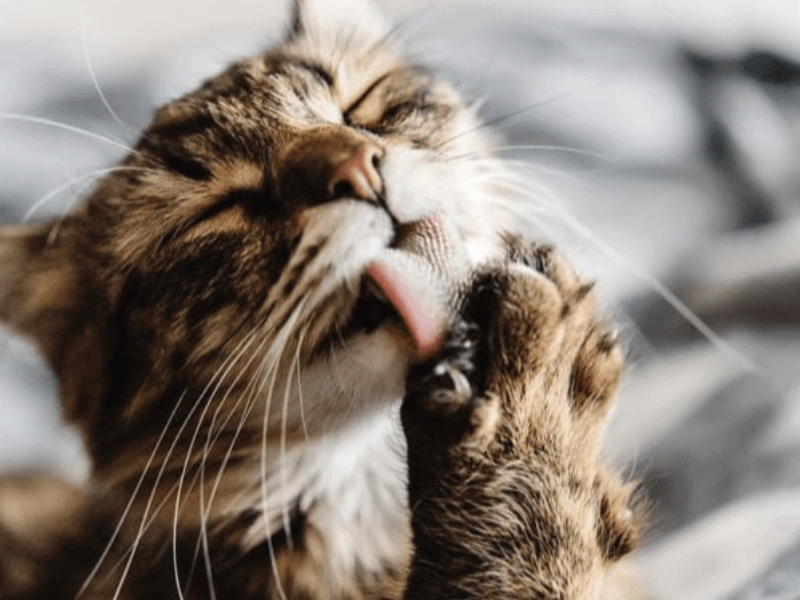2. Your Cat Is Grooming Itself Excessively

A range of physical and psychological elements might set off extreme grooming. From the physical standpoint, a cat may groom too often in an effort to reduce discomfort from skin irritations brought on by allergies, fleas or mites, or underlying skin diseases. Additionally showing up as overgrooming are hormonal abnormalities or some neurological disorders. Psychologically speaking, common offenders are tension, worry, and boredom. When confronted with changes in their surroundings, disputes with other animals, or a lack of mental and physical activity, cats may resort to an overabundance of grooming as a coping mechanism.
If overgrooming is left unbridled, the effects might be severe. Beyond the visible hair loss that could result in thinning coats or bald patches, cats can seriously injure their skin. Raw, irritated regions created by constant licking are vulnerable to infection. Sometimes cats may go to self-mutilation, resulting in open wounds needing medical attention. The psychological effects of the underlying problems generating the overgrooming can also affect your cat’s general welfare, therefore influencing social behavior, sleep habits, and hunger.
Given the severity of this problem, you should contact a veterinarian right away if you observe indicators of too aggressive grooming. Examining thoroughly helps rule out physical factors including skin disorders or allergies. To find any underlying medical problems, your veterinarian can advise skin scrapings, allergy testing, or blood tests. Should physical explanations be discounted, your veterinarian may advise seeing a veterinary behaviorist to handle possible psychological elements.
Treatment for extreme grooming sometimes calls for a multifaceted strategy. Should a medical problem be discovered, the first step is to address it directly. This could call for management of other medical conditions, treatment for parasites, or allergy meds. Regarding psychological reasons, environmental enrichment is usually very important. This can involve adding more interactive toys, designing secure outside environments—like a catio—or developing a regular schedule to help with stress. Sometimes pheromone treatments or anti-anxiety drugs might be advised to assist control tension and stop the overgrooming cycle.
There are actions you, as a cat owner, can take to help your kitty get through this difficult period. To lower tension and boredom, make sure your cat gets lots of chances for play and exercise. Minimize changes that could cause anxiety by establishing a calm, steady environment. Frequent brushing sessions with a soft brush will help eliminate loose hair and give your cat good attention, therefore maybe lessening her need to overgroom. Above all, follow any treatment plan your veterinarian or behaviorist suggests consistently and patiently. Though it takes time, many cats can overcome overgrooming with appropriate care and attention and resume better grooming practices.

